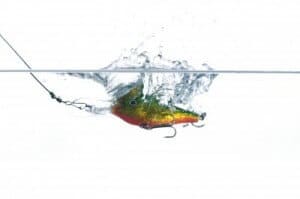Does your business produce linkbait? It should!
Linkbaiting is simply creating content that attracts a linkback. You want to produce something that people want to link back to by tweeting, posting, and sharing through various social media channels. It’s an important part of your search engine optimization strategy.
Linkbait can take many forms, including infographics, resource guides, and incentive driven content (promotions and joint giveaways). It can also include content which is ego-driven (tongue-in-cheek bragging) or critical and sarcastic of something in your industry, as both tend to get a lot of attention.
Isn’t Linkbaiting a Dirty Tactic?
 The term “linkbait” has taken on some negative connotations. And let’s be honest, it doesn’t sound super positive to begin with. But any method should be considered in both a short- and long-term perspective and be complemented by a full content strategy. Still, some will tell you that “linkbait” is bad.
The term “linkbait” has taken on some negative connotations. And let’s be honest, it doesn’t sound super positive to begin with. But any method should be considered in both a short- and long-term perspective and be complemented by a full content strategy. Still, some will tell you that “linkbait” is bad.
So we often like to refer to this method as “link attraction” instead. The important distinction here is the quality of the content you create. However, creating content that is relevant and attracts links back can be challenging.
How can you employ this strategy in your overall SEO approach?
1. Know your goals
While you can employ this strategy without the help of a search engine optimization firm, it’s helpful to have a search optimizer specialist help you figure out what you need to do to improve your rankings as well as what metrics to track. Some common goals include:
- Improve SEO for a particular keyword
- Establish yourself as an expert on a subject
- Develop brand authority
- Develop domain authority
- Offer relevant and useful information
Create your content with specific goals in mind.
2. Know your audience
This can’t be overstated: you need to know who your audience is, how big it is, and how they behave online. Your audience includes anyone in your social networks and anyone in your contact list (past and current clients, professional contacts, prospects).
If you have weak audience amplification, it’s best to create highly unique content which begs to be shared. Those with strong audience amplification need not worry much about how innovative their message is, but rather how well they present it; amazing looking content is more likely to be shared.
3. Know your budget and available time
Producing content that attracts links isn’t as simple as writing blog posts on a bi-monthly basis (though that helps, and you should do it more often!). Other kinds of content like whiteboard presentations, infographics, and niche guides may not be so simple. You need to determine what your realistic schedule and budget are, and allocate your resources thoughtfully.
4. Rethink “Conversion”
When it comes to search engine optimization – particularly when social media and organic link building are concerned – we need to reframe the word “conversion.” You may think that a conversion is a sale, something you profit from immediately. In the world of online marketing, however, a link or social share is a conversion. That means that it needs to be as simple as possible for visitors to share and link to your content. Embed codes, sharing buttons, and removing navigation all help to drive these actions and boost SEO.
What suggestions do you have for creating linkable, shareable content (linkbait)?








